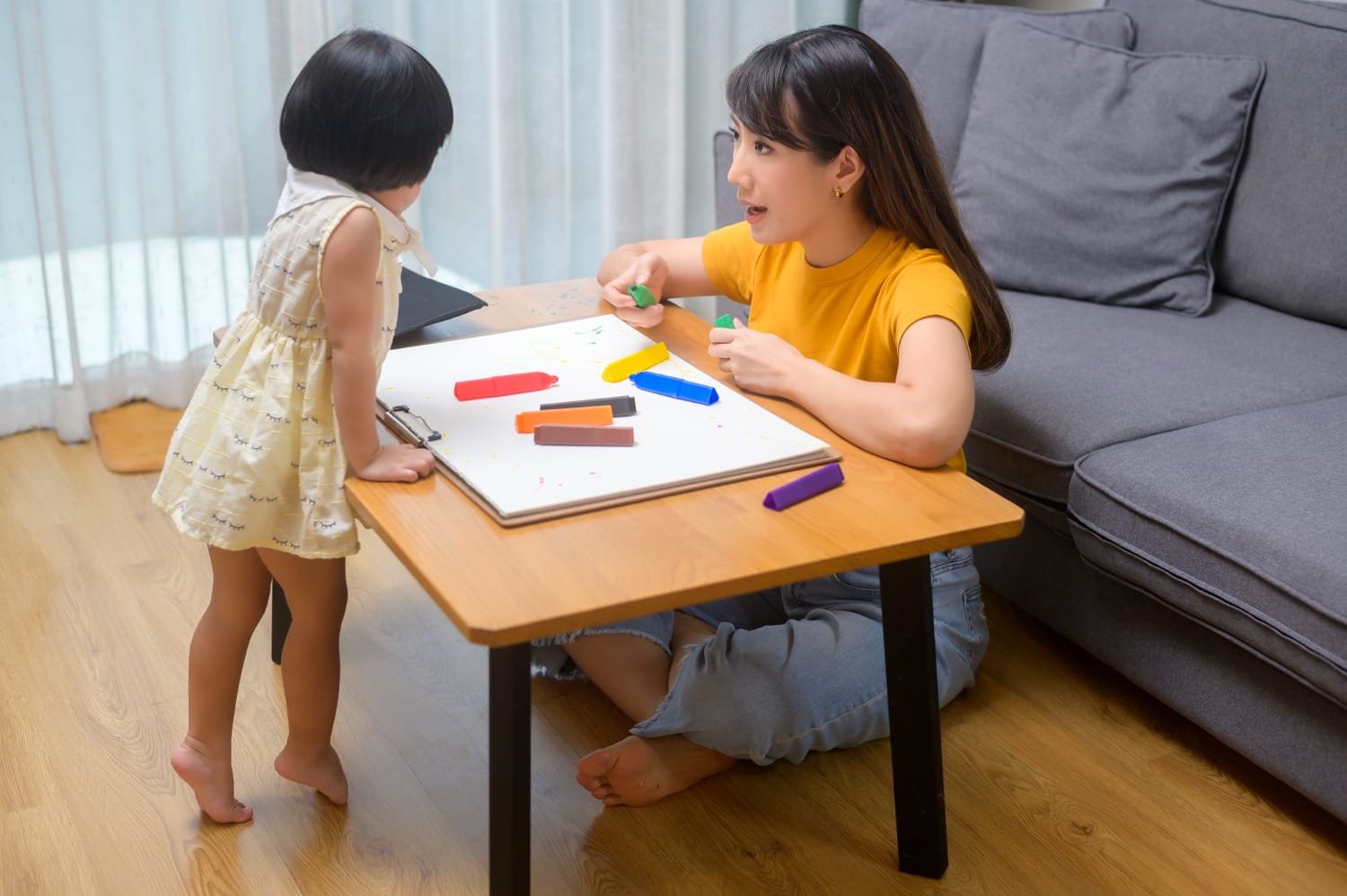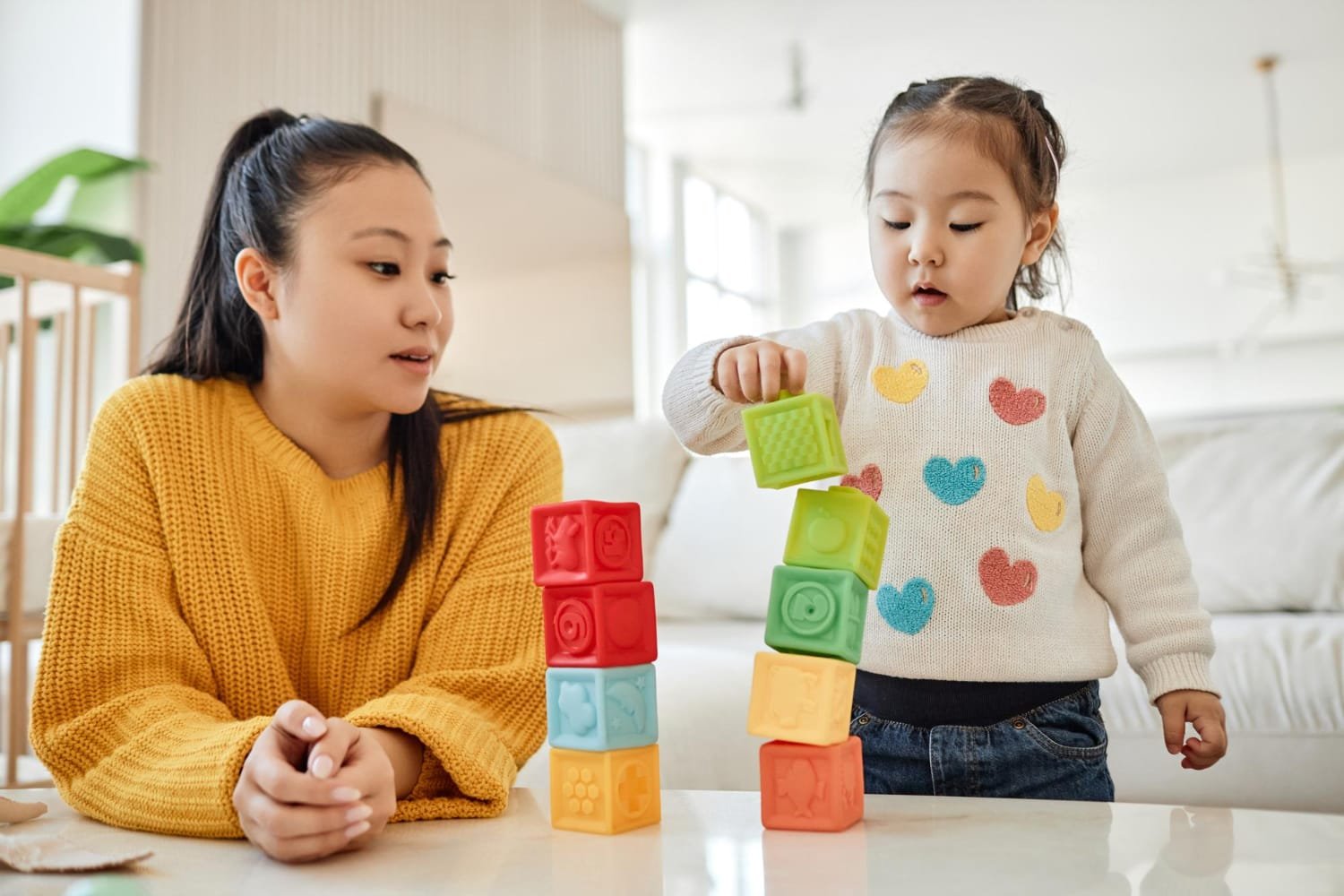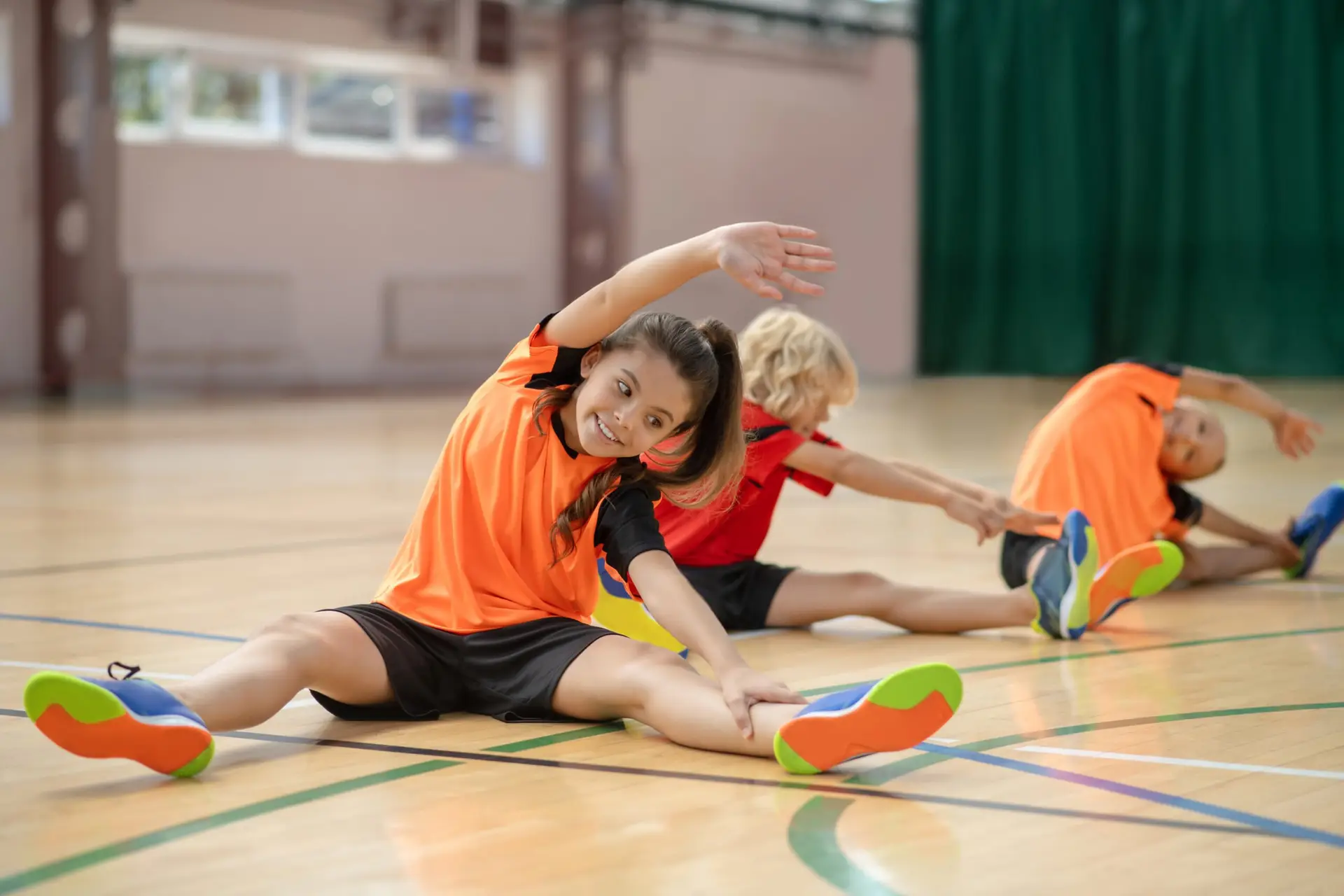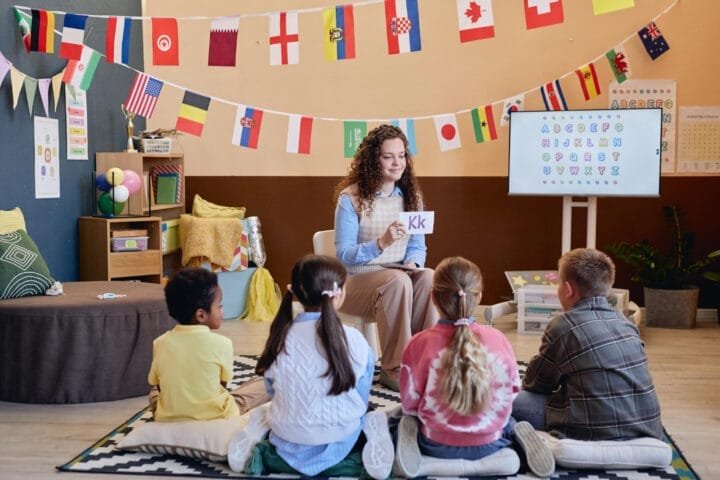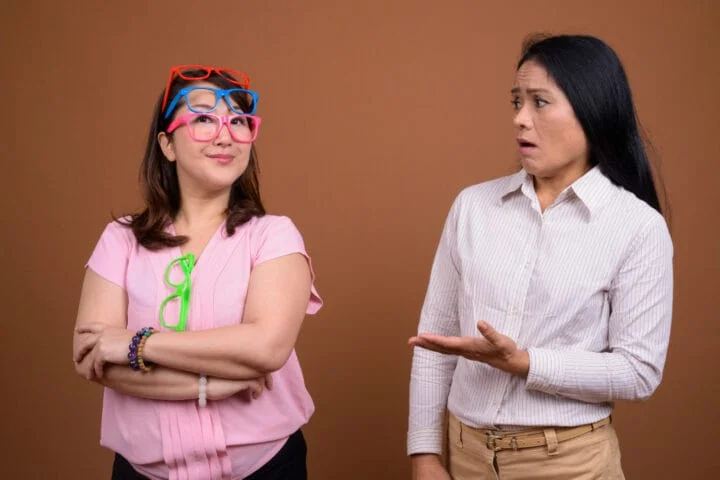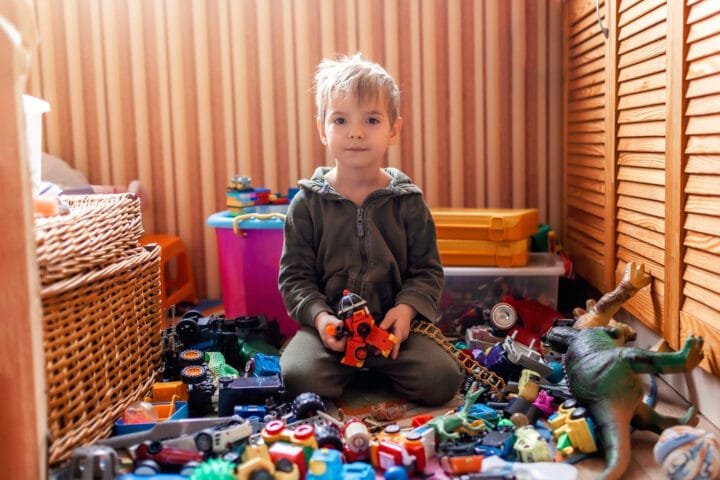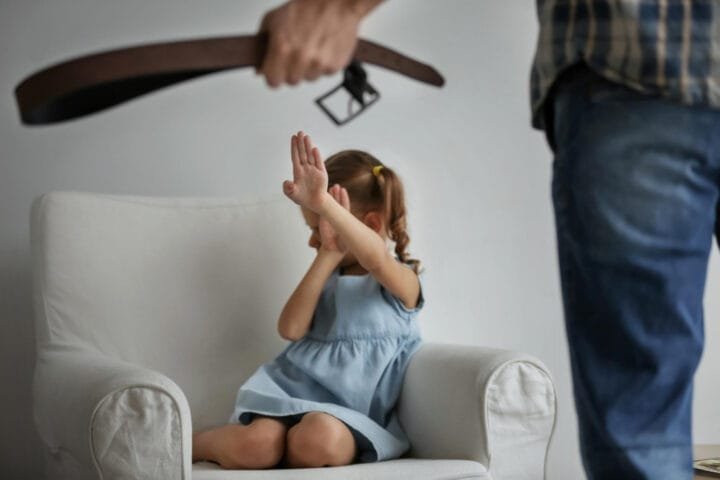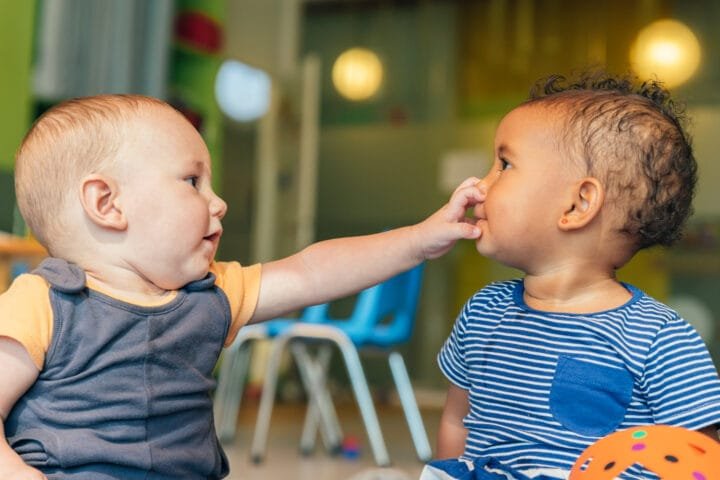Little Helpers or Big Risks? Why Should Children Not Look Over the Younger Sibling? Is Your Older Child Ready to Be a Mini-Adult? Think Again!
Picture this: You are running late again. The after-school sitter canceled, and you are scrambling. Your eldest, a responsible 13-year-old, offers to watch their younger sibling. Sounds tempting. We have all been there! As parents, we juggle a million things, and sometimes, leaning on our older kids seems like a lifesaver. But what if I told you that this seemingly innocent solution could be a recipe for disaster? I learned this the hard way, and I am here to share my story, not to scare you, but to shed light on a crucial topic: why should children not look over their younger siblings? It’s not about being an overprotective parent; it is about understanding child development and prioritizing safety. It is about keeping our kids safe.
The Developmental Divide: Understanding Children’s Limitations as Caregivers
Let’s be honest: we sometimes expect our kids to be mini-adults. I know I did! But the truth is, their brains are still under construction. They are not tiny grown-ups; they are children with all the beautiful, messy, and sometimes unpredictable qualities that come with that stage of life.
Cognitive Capabilities: Why Children’s Brains Aren’t Wired for Constant Vigilance
Think about your attention span. Are you focused 100% of the time? Now imagine being a kid whose brain is still developing. It is a recipe for distraction.
1. Attention Spans: A Fleeting Focus
Children, especially younger adolescents, have notoriously short attention spans. Studies show that the average attention span of a 10-year-old is around 20-30 minutes. Now, imagine asking that child to supervise an active toddler for hours. It’s not just unrealistic; it’s unfair. They might start strong, but their focus will inevitably wander. They may become engrossed in a game or even a simple daydream, leaving the younger sibling vulnerable. It is not intentional neglect; it is simply a developmental reality. A 2015 study by the University of California found that children’s ability to sustain attention significantly improves between the ages of 8 and 13, but it is still far from adult levels.
2. Impulse Control: The “Oops” Factor
Remember when you were a kid and did something incredibly impulsive without thinking it through? We all have those stories! Children are naturally impulsive. Their prefrontal cortex, the part of the brain responsible for impulse control and decision-making, is still maturing. This means they are more likely to act on a whim, which can be dangerous when they are supposed to be supervising a younger sibling. They may decide to have a quick race down the hallway, forgetting the toddler trailing behind. The consequences can be heartbreaking. In fact, the CDC found that unintentional injuries are the leading cause of death among children. Most injuries occurred when children were with other children, not with an adult.
3. Problem-Solving Skills: Navigating the Unexpected
Life throws curveballs, especially when kids are involved. A spilled drink, a sudden tantrum, a minor injury – these are everyday occurrences that require quick thinking and problem-solving skills. While children are learning to navigate these situations, they are not yet equipped to handle them with the same level of competence as adults. A seemingly minor issue can quickly escalate if the older sibling doesn’t know how to react. For example, what if the younger sibling starts choking? Does the older child learn the Heimlich maneuver? A 2019 study published in the journal Pediatrics found that only 20% of children aged 9-12 had basic first-aid knowledge, highlighting the gap in their preparedness for emergencies.
Emotional Maturity: Handling Stress and Responsibility Beyond Their Years
Being responsible for another human being is stressful, even for adults. It demands emotional maturity, a quality that develops over time. Children are still learning to manage their own emotions, let alone those of a younger sibling.
1. Emotional Regulation: A Rollercoaster Ride
Kids are emotional beings. They experience joy, frustration, anger, and sadness intensely. Expecting them to consistently regulate their emotions while also managing the feelings of a younger sibling is a tall order. A disagreement over a toy can quickly escalate into a full-blown meltdown if the older child lacks the emotional tools to de-escalate the situation. Their patience may be shorter.
2. Fear and Anxiety: Paralyzed by Panic
Imagine a child facing an emergency while caring for their sibling. The smoke alarm goes off. The younger child falls and gets hurt. In these situations, fear and anxiety can be paralyzing. A child might freeze, unsure of what to do, or make a poor decision due to panic. This is not a reflection of their character; it is a natural response to stress, amplified by their developmental stage. The American Psychological Association emphasizes that children’s reactions to stress are different from adults, and they may lack the coping mechanisms to deal with high-pressure situations.
3. Recognizing the severity of situations
A child’s ability to accurately assess the severity of a situation is still developing. What might seem like a minor issue to an adult could be a serious problem in the eyes of a child, and vice versa. They might not recognize the signs of a severe allergic reaction, for example, or they might overreact to a small cut. This inability to accurately gauge the situation can lead to delayed or inappropriate responses, potentially putting the younger sibling at risk.
Common Household Hazards: Specific Safety Risks When Siblings Supervise
Our homes, while havens for our families, can be surprisingly dangerous places for unsupervised children. It is easy to overlook everyday hazards when you are an adult, but through the eyes of a child, dangers abound. I remember once my oldest was playing with water and left the younger one alone to play with something else. Thank God I was there!
Kitchen Calamities: The Dangers of Cooking, Burns, and Sharp Objects
The kitchen, the heart of many homes, is also a minefield of potential hazards for children.
1. Stove and Oven Safety: A Burning Concern
Hot stoves, boiling water, sizzling pans – these are everyday kitchen elements that can cause severe burns. Children, especially when unsupervised, might be tempted to touch a hot surface out of curiosity or try to “help” with cooking, leading to devastating consequences. According to the National Fire Protection Association, cooking is the leading cause of home fires and home fire injuries in the United States.
2. Knife and Utensil Handling: A Sharp Reminder
Sharp knives, graters, and other kitchen utensils are essential tools for adults but dangerous objects in the hands of children. Even a seemingly simple task like cutting a piece of fruit can result in a serious injury if an older sibling is not adequately trained or supervised. The allure of using “grown-up” tools can be strong, increasing the risk of accidents. The American Academy of Pediatrics reports that lacerations are among the most common injuries treated in emergency departments for children under 18.
3. Food Safety and Allergies: A Hidden Danger
Food allergies are increasingly common, and accidental exposure to an allergen can have life-threatening consequences. An older sibling might not fully understand the severity of a younger sibling’s allergy or might not be meticulous enough in preventing cross-contamination. Additionally, children might not be aware of proper food handling practices, increasing the risk of foodborne illnesses. A simple mistake, like using the same knife to cut a peanut butter sandwich and then a piece of fruit for an allergic sibling, can have devastating consequences. In fact, each year in the U.S., 200,000 people require emergency medical care for allergic reactions to food.
Bathroom Blunders: Slips, Falls, and Medication Mishaps
The bathroom, with its slippery surfaces and tempting cabinets, presents another set of challenges.
1. Water Hazards: A Drowning Risk
Water, while essential, is also a significant hazard. Bathtubs, even with a small amount of water, pose a drowning risk, especially for young children. A moment of distraction on the part of the older sibling can have tragic consequences. Drowning is a leading cause of unintentional death among children aged 1-4, according to the CDC.
2. Slip and Fall Risks: A Slippery Situation
Wet bathroom floors are notoriously slippery. Children, especially when unsupervised, might run or play in the bathroom, increasing the risk of slips and falls. These falls can result in anything from minor bruises to severe head injuries.
3. Medication and Cleaning Product Safety: A Toxic Temptation
Bathrooms often store medications, cleaning products, and other potentially toxic substances. Children are naturally curious and might be tempted to explore these cabinets, leading to accidental ingestion. An older sibling might not be vigilant enough to keep these substances out of reach or might not fully understand the dangers they pose. The American Association of Poison Control Centers reports that over 300 children in the United States are treated every day as a result of being poisoned.
Playtime Perils: Choking Hazards, Falls, and Unforeseen Accidents
Even seemingly safe play areas can harbor hidden dangers when children are left unsupervised.
1. Toy Safety: Small Parts, Big Trouble
Toys, especially those with small parts, can pose a choking hazard for young children. An older sibling might not realize that a toy intended for their age group is unsafe for their younger sibling. They might also be less attentive to signs of choking, delaying crucial intervention. The U.S. Consumer Product Safety Commission (CPSC) highlights that toys are associated with many emergencies department visits each year, with choking being a primary concern.
2. Outdoor Play Risks: Beyond the Backyard
Unsupervised outdoor play can expose children to various risks, including traffic, encounters with strangers, and injuries on playground equipment. An older sibling, especially if they are still relatively young, might not be equipped to handle these situations effectively. They might not be able to prevent their younger sibling from wandering into the street or might not know how to respond to an approach from an unfamiliar adult.
3. Roughhousing and Unintentional Injuries: When Play Turns Painful
Kids will be kids, and roughhousing is a natural part of play. However, when unsupervised, roughhousing can quickly escalate, leading to unintentional injuries. An older sibling might not have the judgment to know when play is becoming too rough or might not be able to stop a situation from getting out of hand.
The Legal and Ethical Landscape: Parental Responsibilities and Neglect
Beyond the immediate safety concerns, there are legal and ethical dimensions to consider when relying on older siblings for childcare. It is a gray area, and understanding the nuances is crucial. This changed my whole perspective.
Defining Child Neglect: Where Does Sibling Care Cross the Line?
Child neglect laws vary by state, but generally, neglect involves failing to provide for a child’s basic needs, including adequate supervision. The question is, at what point does relying on an older sibling for childcare constitute neglect?
1. Legal Definitions of Neglect: A Patchwork of Laws
There is no single, universally accepted age at which an older sibling can legally be left in charge of a younger one. Some states have specific age guidelines, while others rely on a more subjective assessment of the child’s maturity and the specific circumstances. This legal ambiguity can make it challenging for parents to know when they are crossing the line.
2. Age Guidelines and Recommendations: A Guide, Not a Guarantee
While specific laws may be lacking, many child welfare organizations offer age-related guidelines for sibling care. These guidelines typically recommend that children under 12 should not be left in charge of younger siblings, especially for extended periods. However, these are just recommendations, not legally binding mandates.
3. Parental Responsibility: The Buck Stops Here
Ultimately, parents bear the primary responsibility for their children’s safety and well-being. This responsibility cannot be entirely delegated to an older sibling, regardless of their age or maturity level. Parents must exercise sound judgment and consider all the potential risks before leaving their children in the care of an older sibling.
Potential Consequences: What Happens When Sibling Care Leads to Harm?
The consequences of inadequate supervision can range from minor incidents to tragic accidents with legal repercussions. No one wants to think about this, but it is essential to be aware of the potential ramifications.
1. Civil Liability: Facing the Financial Fallout
If a child is injured while under the care of an older sibling, the parents could be held civilly liable. This means they could be sued for negligence and forced to pay damages. The financial burden of such a lawsuit can be substantial, adding further stress to an already difficult situation.
2. Criminal Charges: A Worst-Case Scenario
In cases of severe neglect or endangerment, parents could even face criminal charges. While these cases are less common, they are a stark reminder of the seriousness of the issue. A criminal conviction can have long-lasting consequences for the entire family.
3. Child Protective Services Involvement: A Knock on the Door
Child Protective Services (CPS) may become involved if concerns are raised about the safety of children in sibling care situations. A CPS investigation can be intrusive and stressful, even if no wrongdoing is ultimately found. It is a situation that every parent wants to avoid.
Alternatives and Solutions: Creating Safe and Supportive Environments for Children
So, what are the alternatives? How can we ensure our children’s safety without relying on older siblings for childcare? Thankfully, there are many options available, and finding the right solution is about being resourceful and prioritizing our children’s well-being. It takes effort and planning.
Building a Network of Support: Exploring Options Beyond Sibling Care
We do not have to go it alone. There are many resources available to help us provide safe and nurturing environments for our children.
1. Formal Childcare: Licensed and Regulated
Licensed daycare centers, preschools, and after-school programs offer structured, supervised care provided by trained professionals. These programs are subject to regulations and inspections, ensuring a certain level of quality and safety. While formal childcare can be expensive, it provides peace of mind, knowing that your children are in capable hands.
2. Family and Friends: The Village Approach
Grandparents, aunts, uncles, and close friends can be invaluable sources of support. Building a network of trusted individuals who can help with childcare can be a lifesaver, especially in a pinch. It is the “it takes a village” concept in action. The Administration for Children and Families (ACF) reports that over 25% of preschool-aged children are cared for by a relative on a regular basis.
3. Parenting Swap or cooperative childcare
This is a great solution, where you take turns with other parents watching each other kids. It requires effort and organization, but it is safe and cost-effective.
Age-Appropriate Supervision: When is Sibling Care Acceptable (and When is it Not)?
While relying solely on older siblings for regular childcare is generally not advisable, there might be limited situations where brief, supervised sibling care could be acceptable. It is about being realistic and assessing the risks carefully.
1. Short Durations and Low-Risk Activities: Minimizing the Risks
If an older sibling is mature enough, sibling care might be acceptable for very short periods, such as while a parent is taking a quick shower or preparing dinner in the same house. The key is to minimize the duration and ensure the activities are low-risk. For example, watching a cartoon together in the living room while the parent is in the next room might be acceptable, while cooking a meal together unsupervised would not be.
2. Clear Rules and Expectations: Setting Boundaries
If sibling care is unavoidable, it is crucial to establish clear rules and expectations for both the older and younger siblings. These rules should cover everything from permitted activities to emergency procedures. Both children should understand their responsibilities and limitations.
3. Emergency preparedness for older siblings
Even if you don’t regularly rely on sibling care, it’s wise to prepare older children for emergencies. Teach them basic first aid, how to call 911, and who to contact if they need help. This knowledge can empower them to act responsibly in unexpected situations. The American Red Cross offers various first aid and CPR training programs designed for different age groups.
Empowering Children with Safety Knowledge: Teaching Age-Appropriate Safety Skills
Regardless of whether they are ever placed in a supervisory role, all children should be equipped with basic safety knowledge. This empowers them to make safe choices and protect themselves and others.
1. Basic First Aid and CPR: Life-Saving Skills
Teaching older children basic first aid and CPR can be invaluable, even if they are never solely responsible for younger siblings. This knowledge can help them respond effectively to minor injuries and save a life in an emergency.
2. Emergency Contact Information: Knowing Who to Call
Children should know how to dial 911 and have a list of emergency contacts readily available. This information should be posted in a prominent location in the home and programmed into their phones if they have them.
3. Household Safety Rules: Creating a Safe Environment
Establish and reinforce household safety rules that apply to all children, regardless of age. These rules cover topics such as fire safety, kitchen safety, and online safety. Regularly reviewing these rules helps to create a culture of safety within the home.
Conclusion: Prioritizing Safety and Well-being, Always
So, why should children not look over their younger siblings? Because their safety and well-being are paramount. Because they are children, not miniature adults. Because their developmental limitations make them ill-equipped to handle the complex responsibilities of childcare. Because there are better alternatives available. My journey taught me that it is okay to ask for help, to rely on a support network, and to prioritize my children’s safety above all else. It is not about being an overprotective parent; it is about being a responsible one.
Let’s create environments where our children can thrive, not just survive, and where they can enjoy their childhoods without the burden of adult responsibilities. Let’s choose wisely, for their sake and our peace of mind. Remember, it takes a village, and there is no shame in leaning on that village when it comes to the safety of our most precious treasures: our children. There are resources out there; do not be afraid to use them! Be informed, be proactive, and be the best parent you can be.
Recommend Books
“Siblings Without Rivalry: How to Help Your Children Live Together So You Can Live Too” by Adele Faber and Elaine Mazlish
This classic book delves into the complexities of sibling relationships and offers practical strategies for fostering cooperation and reducing conflict between siblings. While not directly addressing sibling care, it provides valuable insights into sibling dynamics, which are crucial to understanding the potential pitfalls of placing older children in supervisory roles. It helps parents understand how to create a more harmonious environment where older siblings are not burdened with excessive responsibility.
“The Whole-Brain Child: 12 Revolutionary Strategies to Nurture Your Child’s Developing Mind” by Daniel J. Siegel and Tina Payne Bryson
This book provides a clear and accessible explanation of child brain development, highlighting the limitations in areas like impulse control, decision-making, and emotional regulation. Understanding these developmental stages is crucial for parents when considering whether an older child is ready to care for a younger one. It reinforces the idea that children, even responsible ones, are not simply “mini-adults.”
While advocating for giving children more independence, this book also emphasizes the importance of age-appropriate responsibilities and realistic safety assessments. It challenges the culture of overprotection while still acknowledging genuine risks. It can help parents strike a balance between fostering independence and ensuring their children are not placed in situations they are not equipped to handle, such as being solely responsible for younger siblings.
“Parenting from the Inside Out: How a Deeper Self-Understanding Can Help You Raise Children Who Thrive” by Daniel J. Siegel and Mary Hartzell
This book encourages parents to examine their own childhood experiences and how those experiences might be influencing their parenting choices. It can be particularly relevant to the topic of sibling care, as parents who were expected to care for younger siblings might unconsciously repeat those patterns. The book promotes mindful parenting and making conscious choices that prioritize the well-being of all children in the family.
“The Price of Privilege: How Parental Pressure and Material Advantage Are Creating a Generation of Disconnected and Unhappy Kids” by Madeline Levine
Although not solely focused on sibling relationships, this book explores the pressures faced by children in modern society, including the pressure to achieve and take on adult responsibilities prematurely. It sheds light on the potential negative consequences of placing too much pressure on older siblings, such as anxiety, depression, and a sense of being robbed of their childhood. It aligns with the article’s argument against overburdening older children with caregiving duties.
FAQs
There is no magic age where it suddenly becomes safe for an older sibling to be fully responsible for a younger one. It depends on the maturity of both children, the specific situation, and the risks involved. While some states have laws regarding the minimum age for leaving a child home alone, there are no set legal guidelines for sibling care. Generally, experts recommend relying on children under 12 for regular childcare. Even with older teens, it is crucial to assess their readiness, provide clear instructions, and ensure they know how to handle emergencies. It is always better to err on the side of caution when it comes to your children’s safety. Remember that the ultimate responsibility for a child’s well-being always rests with the parent or legal guardian, not an older sibling.
Even if your older child is responsible and mature for their age, it doesn’t necessarily mean they’re equipped to handle the full responsibility of caring for a younger sibling. Children’s brains are still developing, particularly in areas like impulse control, problem-solving, and emotional regulation. This can impact their ability to react appropriately in emergencies or manage challenging situations. Furthermore, placing a child in a caregiver role can create an imbalance in the sibling dynamic and potentially lead to resentment. It is also essential to consider the potential dangers present in everyday home environments, dangers a child may not be fully aware of or equipped to handle. While your older child may be responsible in many ways, providing childcare is a complex task best left to adults or trained professionals.
Thankfully, there are many alternatives to relying on sibling care! Formal childcare options like licensed daycare centers, preschools, and after-school programs offer structured supervision by trained professionals. You can also build a support network with family and friends, taking turns watching each other’s children. If your budget allows it, hiring a qualified babysitter or nanny is another excellent option. Exploring these alternatives lets your older child enjoy their childhood while ensuring your younger one is in safe and capable hands. Every family is different, so take some time to investigate the resources available in your community and find a solution that fits your needs.
Life happens, and sometimes, emergencies or unavoidable circumstances may arise where you must rely on your older child for a very short period. If this happens, ensure it’s for the shortest time possible and that your older child is as prepared as they can be. Please provide them with apparent instructions, emergency contact numbers, and basic safety guidelines. Emphasize that their primary role is to keep their sibling safe and that they should call you or another trusted adult immediately if anything goes wrong. It is also crucial to have an honest conversation with your older child about their comfort level and ensure they don’t feel pressured to take on a responsibility they’re not ready for. Make this an exceptional circumstance rather than a regular occurrence.
Teaching children about safety is crucial, and it can be done in an age-appropriate and reassuring way. Focus on empowering them with knowledge rather than instilling fear. Use real-life examples and simple language to explain potential hazards and how to avoid them. Practice safety drills, like what to do in case of a fire, so they feel prepared. Emphasize that these measures are in place to keep them safe and that they can always come to you or another trusted adult if they have any concerns. Make it a fun and regular conversation rather than a scary lecture. Role-playing different scenarios can also be a helpful and engaging way to teach them safety skills without causing undue anxiety.
